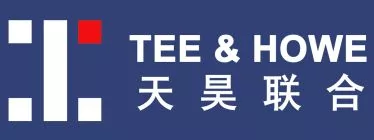These guidelines were announced by the CNIPA on 29 December 2023 at the link below [As the New Year present? May be not...... Read on]:
https://www.cnipa.gov.cn/art/2023/12/29/art_66_189401.html
According to the first paragraph, the purpose of these guidelines is to help applicants to "understand the requirements on distinctiveness of unconventional trademarks like 3D trademarks, color combination trademarks", and to guide applicants to "correctly apply for registration and to use unconventional trademarks" [However, these guidelines are like a refusal guide to me......]. The guidelines help by explaining that the 3D, color combination and sound trademarks are generally considered to have no distinctiveness, as these trademarks could easily make the relevant public to these trademarks "as part of the product, the product itself or the outer packaging of the product, and the like, causing the relevant mark being unable to perform the basic function of trademark identification and distinguishing the source of goods or services":
a) 3D trademarks including the following:
- The 3D shape of the product itself. The example used is the watch face of a luxury watch.
- The product packaging or container. The example used is the container of the Maggi Sause bottle.
- Partial design. The example used is the yellow lining of the Dr. Marten boot.
- Simple or decorative 3D shapes. The example used is a white sphere.
- 3D objects of common object of the relevant servicing industry. Example used is Ferris wheel for amusement park services.
- 3D object of general shape in combination with planar distinctive feature of small size, or could be easily recognized as packaging or decorative feature. The example used is the Mont Blanc pen.
b) Color combination trademarks, specifically stating that these could only acquire distinctiveness through long term or extensive use.
c) Sound trademarks including the following:
- Only sound that directly expresses the content, consumer target, quality, function, use and other characteristics of designated goods or services. The examples used are piano playing sound for musical instruments, children laughter for infant formula, classical music for arranging and organizing music concert service, dog barking or cat meowing sound for pet keeping service, and water boiling sound for electric kettle.
- Sound that would generally appear during the use of the product or the provision of the service. The examples used are bottle opening sound for beer or red wine, and notes counting sound from ATM for banking services.
- Common music of the industry. The example used is the wedding march music for planning and arranging wedding service.
- Overly simplified or complicated music. The example used is the whole "For Elise" for kindergarten service.
- Text phrases and the like that are directly sung, read, spoken or called out in other ways with ordinary intonation or simple melody. The examples used are various catch phrases in Chinese.
In addition to b), the guidelines also mentioned that for a) and c), distinctiveness could be acquired by long term or extensive use.
Toby's observations
My feeling after reading these guidelines is "NO, NO, NO" for registration of 3D, color combination and sound trademarks. However, there may be some hope for sound mark, for example unrelated sound unrelated to the content, consumer target, quality, function, use and other characteristics of designated goods or services, for example the famous Intel sound mark.
Since the major route to obtain registration of these unconventional trademarks is through proof of long term or extensive use, these guidelines should be read in conjunction with the draft provisions on standards on evidence for trademark announced recently by the CNIPA on 1 December 2023, which was reported in my article below:
With the relative high evidence threshold used by the CNIPA, good luck with your 3D, color combination and sound trademarks in China.
The content of this article is intended to provide a general guide to the subject matter. Specialist advice should be sought about your specific circumstances.

